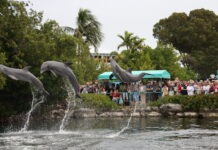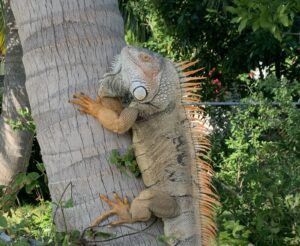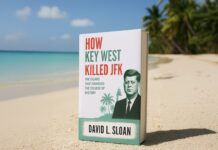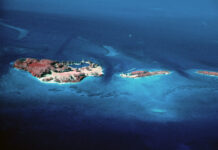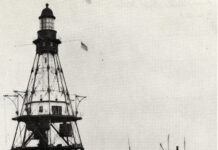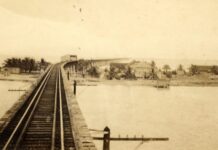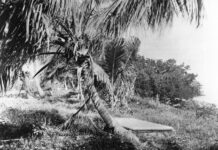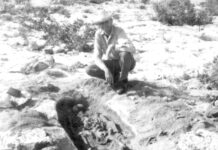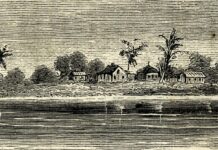December 19, in the piratical history books, has been an active one in the shallow waters surrounding the Florida Keys. In 1818, the Emma Sophia, sailing from Hamburg to Havana, was sailing between the Bahama and Cay Sal banks when she encountered a pirate schooner. The ship, said to have been 30 tons and armed with one cannon, was manned by a crew of 30 pirates who took command of the Emma Sophia and brought her to a small port formed by “the Florida Isles and the Martyr’s Reef.” The closest naturally occurring deep harbors suitable for such an engagement might have been at Bahia Honda or Knights Key, among a short list of others.
William Savage, a member of the Emma Sophia’s crew, would have his account of the event published in the Boston Daily Advertiser “Marine Journal” on February 3, 1819. Savage wrote, “Davis, the spokesman, drew his knife and swore, that every man should die, unless he found the money, and first he would hang the supercargo. He called for a rope, which he had brought on board, fitted with a hangman’s noose, sent a man up the mizzen yard and rove it and brought the noose down–and one man held it, and another stood ready to hoist. Now, said Davis, tell me where is the money, where are your diamonds, or I will hang you this minute. In vain I repeated I had nothing more but my watch, which I offered and he refused. Once more, said he, will you tell? I have nothing to tell, said I. On with the rope, said the villain, and hoist away. The fellow with the noose came towards me, and I sprang overboard. They took me up, after some time apparently insensible. They took off all my cloaths[sic], and laid me on my back on deck, naked as I was born, except having a blanket thrown over me. Here I laid five hours without moving hand or foot. Meanwhile they robbed us of every thing of the least value.”
While no one aboard the Emma Sophia lost their lives, the same could not be said for the second piratical event that occurred on the same date nine years later involving the pirate slaver Guerrero. A letter written on July 31, 1827, from a British officer in Havana to another in London, read in part, “The illicit slave trader from this port… appears to be about to resume its former activity, no less than four Spanish vessels having during the present month sailed are the brigs Guerrero… She is well armed, and has a crew of ninety men; and there can be little doubt that her purpose is to plunder of their cargoes of slaves any weaker vessels that she may fall in with in the coast of Africa.”
On December 19, 1827, Lt. Edward Holland and the 56-man crew aboard the H.B.M. (His Britannic Majesty) Schooner Nimble were patrolling the Florida Straits 250 miles north of Havana when a suspicious looking brig off the coast of Orange Cay, Bahamas was spotted. The noon entry into the Nimble’s log read, “Observed stranger to be a suspicious looking brig. I set topsail, cleared [the deck] for action & fired two guns to bring stranger to whom we observed hauling up to avoid us; made more sail.”
An exchange of cannon and musketry fire occurred between the two ships until the Guerrero feigned surrender by firing a blank and flashing a conciliatory light causing the Nimble to cease fire. The Guerrero attempted another run, only to slam into Carsyfort Reef at full sail.
According to an 1831 edition of the United States Service Magazine, “The masts of the chase were heard to fall with a tremendous crash, followed with a horrid yell from those on board, which left no doubt of her being a Guineaman.” The ship’s hull split open and when the Guerrero filled with water, 41 Africans shackled in the ship’s hold drowned where they were chained. The Niles Weekly Register reported, “The cries of 561 slaves and crew were appalling beyond description.”









